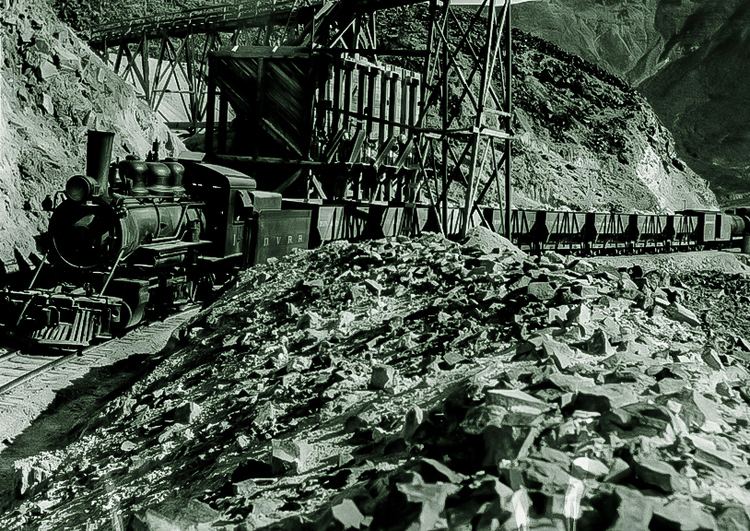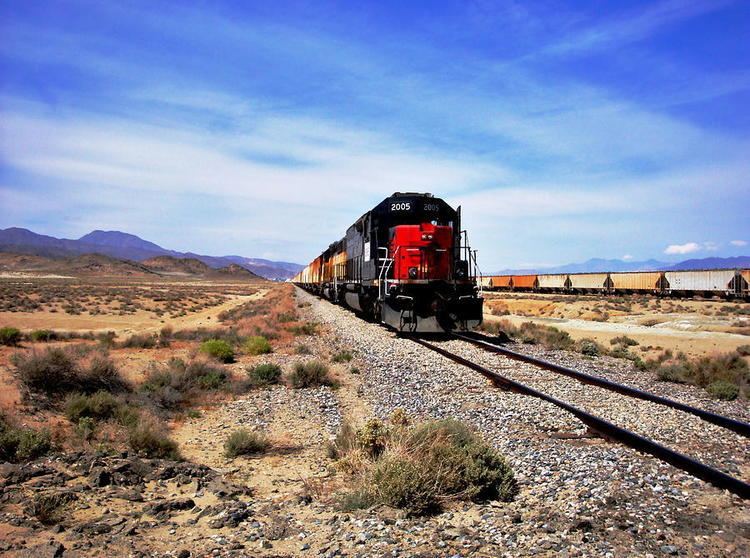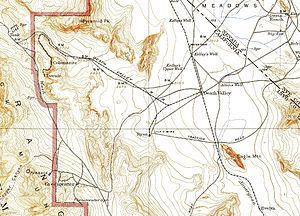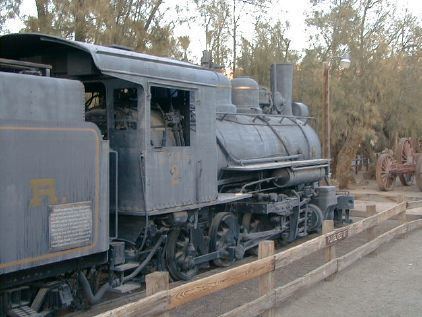Reporting mark DVRR Track gauge 3 ft (914 mm) | Dates of operation 1914–1931 | |
 | ||
Locale Ryan, California and Death Valley Junction, California | ||
The Death Valley Railroad (DVRR) was a 3 ft (914 mm) narrow gauge railroad that operated in California's Death Valley to carry borax with the route running from Ryan, California to the mines at Ryan C., located just east of Death Valley National Park, to Death Valley Junction, a distance of approximately 20 miles.
Contents

Death valley railroad at laws railroad museum bishop ca
History

When mining operations at the Lila C. Mine were declining around 1914, Pacific Coast Borax Company began scouting the land outside Furnace Creek for richer borax deposits. Once they found some a bit west of the present mines, plans were put forward to build a narrow gauge railroad from the new mines to connect with the Tonopah & Tidewater Railroad at Death Valley Junction to ship the borax away for processing and packaging. The line was built by a separate company from Pacific Coast Borax Company, because they were struggling with financial issues at the time. All the track and maintenance equipment that was used in building the line was salvaged from the old Borate and Daggett Railroad which was located southwest of Death Valley at Daggett, California, and was laying dormant. Its second Heisler locomotive, Francis was used in the construction of the Death Valley Railroad along with a few gondolas and flatcars from the Northwest Pacific Railroad. After the line was completed, two 2-8-0 steam locomotives were bought from the Baldwin Locomotive Works to work the line and Francis was sold off. One train ran per day bringing food and water to the workers at the Ryan mine, and bought ore back late in the afternoon. After better deposits of borax were discovered at Boron, the Death Valley Railroad tried to resort to tourist operations by bringing in a Brill railcar to transport tourists to the old mines. Due to a lack of profit from tourists and freight trains and the closure of the mines, the railroad closed in 1931.

Much of the railroad ran parallel to what is today State Route 190. After this railroad ceased operations, the United States Potash Company bought the equipment, track and rolling stock to construct their own line located near Loving, New Mexico, which became the United States Potash Railroad. All the rails from the Death Valley Railroad were used on the new line till about 1941 when they were replaced by heavier-pound rails from the Atchison, Topeka & Santa Fe Railroad. The line was used till 1967 when better potash deposits were discovered in Saskatchewan and Pacific Coast Borax Company merged with U.S. Potash and became U.S. Borax & Chemical Cooperation.
Preservation

All three engines that were on the Death Valley Railroad are preserved. After the United States Potash Railroad turned over their operations to diesel locomotives in the 1950s, the two ex-Death Valley Railroad engines were both singled out for preservation.
No. 1 was sent to Carlsbad, New Mexico and put on display in between Park Drive and E. Riverside Drive and sports the bold lettering of "U.S. Potash" on the sides of her tender.
No. 2 also worked for the United States Potash Railroad, but she was bought by the Death Valley National Park and is now currently at the Borax Museum at Furnace Creek.
A railcar was bought in the later years of the line in 1928, when Pacific Coast Borax attempted to save their dying railroads, DVRR included, from the scrapheap by promoting them as tourist attractions. She too, was bought by the United States Potash Railroad to transport workers to the potash mines. By 1967, she was worn out, but the Laws Rail Museum of Bishop, California managed to step in just in time to save her from scrap. After several years of extensive restoration, she now runs happily on the museum's 3 ft (914 mm) narrow gauge track.
The bogey trucks of some of the old DVRR ore cars are said to still exist at Laws, whilst the old caboose (#100) still exists on the property of the old potash refinery site at Loving, New Mexico. The tankcar bodies (also ex-DVRR) are also located just outside Carlsbad.
As for the 'Francis', the ex-Borate and Daggett Railroad Heisler locomotive that aided in the construction of the line and was reportedly used for shunting ore trains at Ryan, she was sold off to the Nevada Short Line Railway in 1916 and later on to the Terry Lumber Company (later Red River Lumber Company) to work the private 3ft gauge logging line from Round Mountain, California. 'Francis' was scrapped in 1925, following the disastrous Terry mill fire that put an end to all logging and railroad operations in the region.
